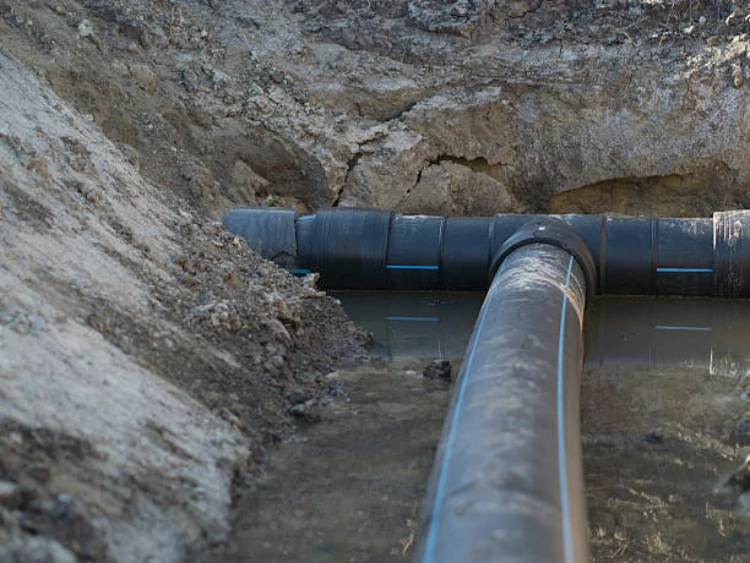The evolution of piping systems has witnessed a paradigm shift with the advent of High-Density Polyethylene (HDPE) pipes. This article delves into the groundbreaking innovations in HDPE pipe technology that are reshaping the landscape of modern construction and infrastructure development.
1. The Rise of HDPE Pipe Technology
1.1 Introduction to HDPE Pipes
HDPE pipes have gained immense popularity in recent years due to their exceptional characteristics. Composed of high-density polyethylene, these pipes offer a versatile and durable solution for various applications, ranging from water supply and sewage systems to industrial processes. The surge in demand for HDPE pipe is attributed to their unique combination of flexibility, strength, and environmental sustainability.
1.2 Material Advancements in HDPE Pipes
Recent innovations in HDPE pipe technology involve advancements in material composition. Manufacturers are continually refining HDPE formulations to enhance performance characteristics. These material enhancements contribute to increased strength, improved resistance to environmental factors, and expanded application possibilities. The quest for superior material properties underscores the commitment to providing reliable and efficient piping solutions.
1.3 Smart Piping Systems
One of the transformative innovations in HDPE pipe technology is the integration of smart features into piping systems. Smart piping solutions leverage digital technology to monitor, analyze, and optimize the performance of HDPE pipe. This includes the incorporation of sensors for real-time data collection, predictive maintenance capabilities, and communication systems that enable remote monitoring. The convergence of HDPE pipes and smart technology enhances the efficiency and reliability of piping systems, marking a significant leap forward in the industry.
2. Advancements in HDPE Pipe Manufacturing
2.1 Extrusion Technology
The manufacturing process of HDPE pipes has undergone significant advancements, particularly in extrusion technology. Extrusion plays a pivotal role in shaping the dimensions and characteristics of HDPE pipe. Innovations in extrusion technology focus on precision and efficiency, ensuring uniformity in pipe dimensions and wall thickness. This results in pipes with enhanced structural integrity and consistent performance, meeting the stringent requirements of modern construction projects.
2.2 Co-extrusion Techniques
Co-extrusion techniques have emerged as a notable advancement in HDPE pipe manufacturing. This involves the simultaneous extrusion of multiple layers with different properties, creating pipes with tailored characteristics. Co-extruded HDPE pipes may feature layers with enhanced UV resistance, increased abrasion resistance, or improved chemical resistance, depending on the specific application requirements. This versatility in material composition within a single pipe enhances the adaptability of HDPE pipe to diverse environmental conditions.
2.3 Large-Diameter HDPE Pipes
In response to the demand for high-capacity piping systems, manufacturers are pushing the boundaries of HDPE pipe sizes. Innovations in extrusion capabilities allow the production of large-diameter HDPE pipe that cater to the needs of mega-infrastructure projects. These pipes maintain the inherent benefits of HDPE, such as flexibility and corrosion resistance, while addressing the challenges associated with conveying large volumes of water, wastewater, or industrial fluids.
3. Environmental Sustainability and HDPE Pipes
3.1 Recyclability and Circular Economy
A key focus of innovation in HDPE pipe technology revolves around environmental sustainability. HDPE pipes are inherently recyclable, contributing to a circular economy where materials are reused and repurposed. The recyclability of HDPE pipe aligns with global efforts to reduce plastic waste and minimize the environmental impact of construction activities. This commitment to sustainability positions HDPE pipe as a responsible choice for eco-conscious construction projects.
3.2 Life Cycle Assessment (LCA)
Advancements in HDPE pipe technology extend to life cycle assessment methodologies. Manufacturers are increasingly conducting comprehensive life cycle assessments to evaluate the environmental impact of HDPE pipes from raw material extraction to disposal. This holistic approach allows stakeholders to make informed decisions based on the environmental performance of HDPE pipes, further reinforcing their position as a sustainable and eco-friendly choice in the construction industry.
Conclusion:
In conclusion, the innovations in HDPE pipe technology are reshaping the future of piping systems. From material advancements and smart piping solutions to manufacturing breakthroughs and environmental sustainability, HDPE pipes stand at the forefront of modern construction practices. As the industry continues to embrace these innovations, HDPE pipes are set to play a pivotal role in shaping the efficiency, durability, and sustainability of piping systems worldwide. The future of piping is undeniably influenced by the continuous advancements in HDPE pipe technology.
Contact
IFANPLUS is a professional manufacturer of plastic pipes, fittings, and various types of valves in China. If you are interested in our PPR valves, pipes, and fittings, feel free to contact our experts. Explore our diverse range of drainage valve products, including PPR and PVC pipes in German and American standards, as well as various types of valves. We offer a variety of standard pipes to meet your specific requirements. Click here to learn more about our products.
We will reply your email or fax within 24 hours.
You can call us at any time if there is any question on our production.
For more information,pls visit our webside https://www.ifanplus.com/
Pls Mailto: [email protected]






